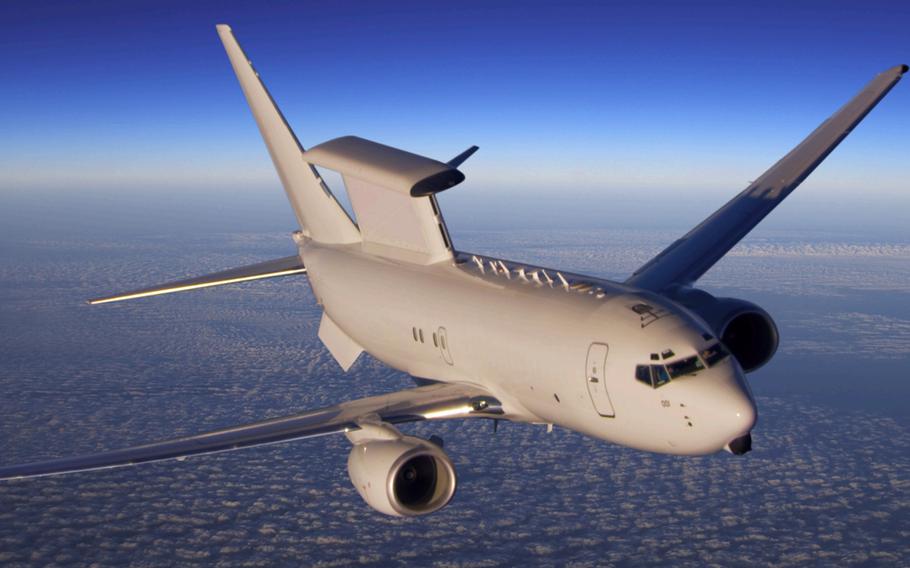
The E-7 Airborne Early Warning and Control Aircraft, also called the Wedgetail, is known for its advanced radar and surveillance capabilities. (Boeing)
The U.S. State Department recently signed off on the possible sale of four E-7 Airborne Early Warning and Control Aircraft, also known as the Wedgetail, to bolster South Korea’s reconnaissance capabilities.
The potential $4.92 billion sale to South Korea includes 10 jet engines and various other infrared, navigation and radio equipment for the Wedgetails, the Defense Security Cooperation Agency announced in a Nov. 4 news release.
The agency, part of the Defense Department, runs the Foreign Military Sales program. Sales of more than $25 million in military equipment to NATO members and five other countries, including South Korea, require congressional approval.
The aircraft will boost South Korea’s “ability to meet current and future threats by providing increased intelligence, surveillance, and reconnaissance (ISR) and airborne early warning and control capabilities,” according to the release.
South Korean President Yoon Suk Yeol has vowed to increase his country’s military preparedness against the threat of North Korean missiles.
Last year, the South Korean, U.S. and Japanese militaries activated a data-sharing system to improve their ability to detect and track the North’s missile launches in real-time.
“The three countries established this mechanism to improve their ability to ensure the safety of their peoples by trilaterally detecting and assessing missiles launched by [North Korea] in real-time,” the U.S. Defense Department said in a Dec. 19 news release.
North Korea has launched approximately 45 missiles in 12 separate days of testing so far this year. The communist regime last fired at least seven short-range ballistic missiles off its eastern coast on Nov. 5, according to the South Korean and Japanese militaries.
Acquiring the Wedgetails is “essential for detecting potential aerial aggression from North Korea,” defense analyst Harpreet Sidhu said Monday in a news release from the UK-based GlobalData consulting firm.
“The E-7 aircraft, known for its advanced radar and surveillance capabilities, will provide South Korea with comprehensive situational awareness and bolster its capacity for monitoring contested airspace,” Sidhu said. “This will also enhance [the South Korean air force’s] interoperability with the U.S. and other [Asia-Pacific] allies, especially as North Korean missile threats continue to increase.”
Interoperability is a term used by militaries to describe the ability of one nation’s forces to use another’s training methods and equipment.
The Wedgetail was initially developed for use by the Australian Defense Forces, according to an Air Force news release on April 26, 2022. The aircraft is based on the Boeing 737 Next Generation airliner and provides commanders with a battlefield overview using its long-range radar and communication systems, according to Boeing’s website.
The jet has a range of roughly 4,000 miles without refueling and can fly at a maximum altitude of 41,000 feet, the website states.
The Air Force decided to replace its fleet of E-3 Sentry Airborne Warning and Control System aircraft with the Wedgetail in 2022 and awarded Boeing a contract for a service-specific E-7 prototype not to exceed $1.2 billion starting the following year, according to an Air Force news release on Feb. 28, 2023.